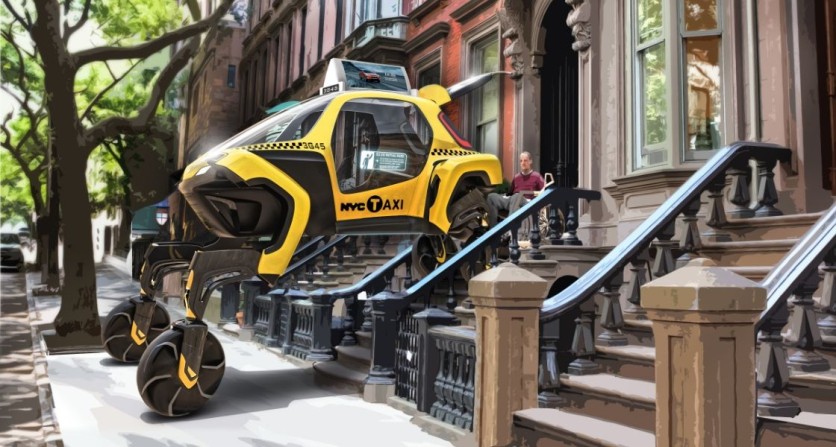In a captivating venture, Hyundai's CRADLE, in collaboration with Sundberg-Ferar, has unveiled the Elevate, an electric car equipped with robotic legs.

Hyundai is looking away beyond a chassis, four wheels and a combustion engine, electric motor or hydrogen fuel cell.
Hyundai's Walking Car
The South Korean automotive manufacturer's startup initiative, Cradle, known for its commitment to venture capital, technical innovation, and conceptual development, partnered with the industrial design firm Sundberg-Ferar to bring this groundbreaking concept to life.
Interesting Engineering reported that the innovative project aims to create Ultimate Mobility Vehicles (UMVs) capable of walking on legs, driving like conventional vehicles, and navigating challenging terrains, according to the company's vision.
This visionary concept, named Elevate, was showcased at the Consumer Electronics Show (CES) 2024, standing out among several other unveilings, including the next-gen e-Cornering wheel system tech featuring Mobion.
Distinguished as the 'walking car,' this innovative vehicle features intricate 'complex multi-joint legs' inspired by the biomechanics of grasshopper legs. These legs enable the car to ascend steps, elevate itself above flowing water, and even leap over gaps.
John Suh, Vice President, highlighted the potential impact on people with disabilities globally, stating that individuals could welcome the Hyundai Elevate as it walks up to their front door, allowing their wheelchairs to seamlessly roll inside.
The company emphasized that as the project progressed, the Elevate team recognized that this groundbreaking innovation aligns with the company's vision for a future where people experience freedom of mobility.
Hyundai expanded on the possibilities, stating that Elevate could play a significant role in rural exploration, construction, or disaster relief by enabling rescue teams to access areas where traditional roads are compromised.
Additionally, Tech Radar reported that it could provide wheelchair users with an easier means of transportation by "climbing" steps to a house or building.
Developing H-MEX Exoskeletons
Hyundai underscores the notion that the tangible manifestation of freedom of mobility should be considered a universal entitlement. This is particularly poignant when acknowledging that certain individuals encounter difficulties even in basic physical movements.
In response to this recognition, the company is actively developing its wearable H-MEX exoskeletons, as stated in its official press release.
Tailored to assist individuals with paraplegia and the elderly, this robotic medical device can support up to 40kg of the user's weight. It holds promise as a mobility solution for those contending with spinal injuries or muscle-related challenges.
Speaking on behalf of Hyundai's Elevate project, project spokesperson Mr. Chi explains that challenges in reaching the nearest bus stop could discourage an elderly woman from regular doctor visits until her health deteriorates.
Looking to the future, Chi envisions a scenario where people explore diverse and practical mobility solutions beyond traditional car purchases, emphasizing the need for developing transportation solutions that adapt to the evolving needs of the future.
Highlighting the enduring necessity of travel, Chi acknowledges that transportation methods will continuously undergo change and transformation.
The choices concerning transportation will be shaped by various factors, including climate, environment, social dynamics, and financial considerations, influencing society's perception of mobility.
Recognizing the importance of anticipating and addressing these evolving demands, Hyundai acknowledges that the need for mobility is enduring, but the transformation will be in the ownership of vehicles, from individuals to service providers.


![Apple Watch Series 10 [GPS 42mm]](https://d.techtimes.com/en/full/453899/apple-watch-series-10-gps-42mm.jpg?w=184&h=103&f=9fb3c2ea2db928c663d1d2eadbcb3e52)


